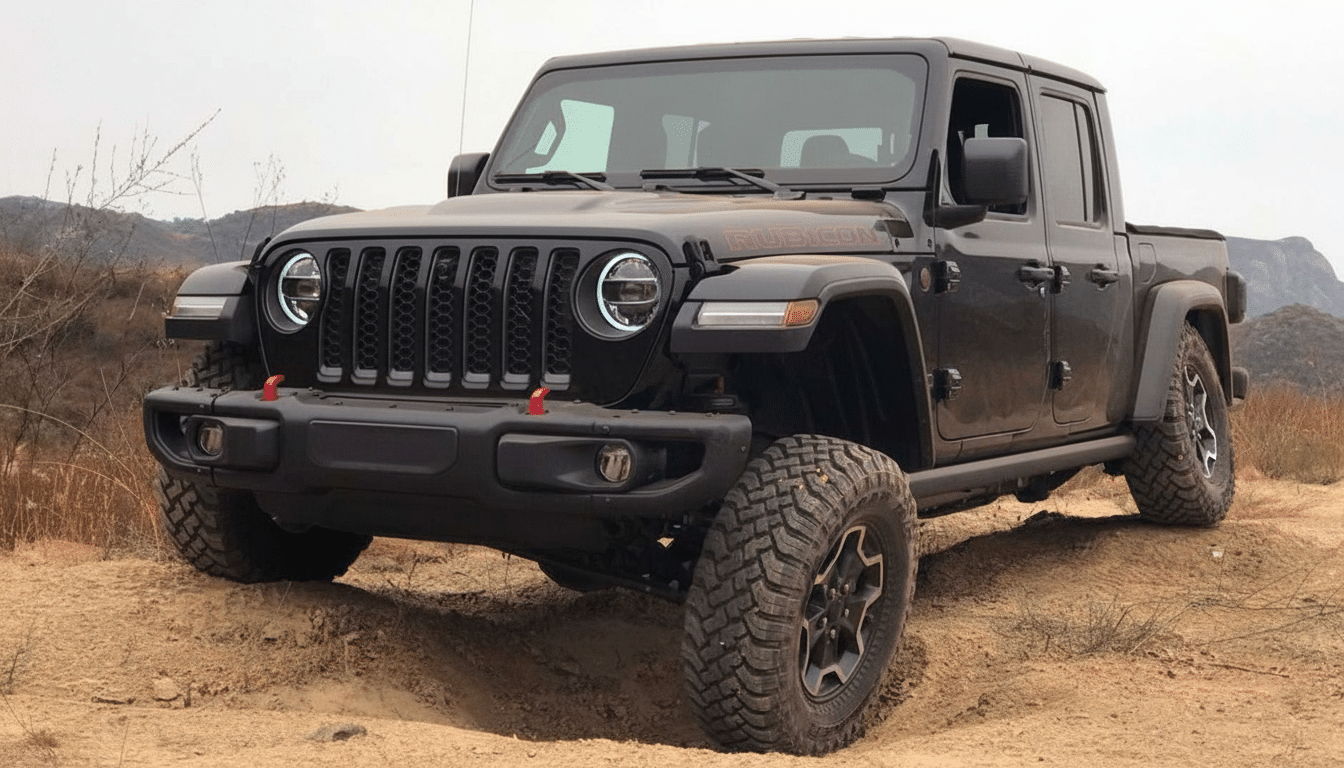Stellantis has abandoned its long-teased plan to introduce an electrified Jeep Gladiator into the lineup, scrapping a plug-in hybrid 4xe variant that was destined for North America.
In a statement, the company said it is re-evaluating its propulsion strategy for trucks and reallocating resources to focus on what the Gladiator does best, with additional factory content, increased customizability, and other powertrain configurations—but not a plug-in model.

The decision is part of a larger pivot at Stellantis, which has recently rethought near-term battery-electric pickups in favor of extended-range proposals that combine batteries with onboard generators. The move hints at an automaker laying a bet on flexibility and cost control in a pickup segment where customers are still leery about the price, charging availability, and real-world towing range.
Why the Gladiator 4xe Stumbled in Development
On paper, a Gladiator 4xe seemed inevitable. Jeep’s Wrangler 4xe has been the best-selling plug-in hybrid in the U.S. for a few years running, according to company sales data and registration analysis referenced by industry trackers, and much of the Gladiator is built on that vehicle’s architecture. But it is more complicated to package a large battery in a body-on-frame pickup with a long wheelbase, live axles, and an open cargo bed than beneath the floor of an SUV cabin. The weight and cost penalties add up fast, pressuring everything from payload to towing capacity and pricing—three things that midsize pickup buyers study intently.
There’s also the use-case problem. A lot of Gladiator owners will add equipment to their trucks for off-road work or towing, and in these roles even robust hybrids make efficiency gains less significant. Third-party testing has demonstrated that heavy towing can cut an EV’s usable range by almost half, a fact that leaves buyers nervous without plenty of high-speed charging on well-traveled trailering routes.
Market Signals: EV Trucks Run Into a Speed Bump
Industry data helps explain the change. Even as U.S. EV share has risen into the high single digits, pickups have been a recalcitrant subsegment. Sales have grown for battery-electric trucks, but from a small base: for example, Ford sold just over 24,000 units in a recent full year of the F-150 Lightning—respectable, but small versus the several hundred thousand conventional trucks that are sold per year. “The gating factors, at least for truck intenders, are affordability, charging access, and lifestyle fit,” analysts from Cox Automotive and S&P Global Mobility said.
Stellantis is rolling the dice in terms of its latest bet—which involves extended-range tech for trucks. Its strategy puts a usable battery together with a gasoline generator to extend total driving distance—which the company claims can reach around 690 miles for those who get one of the configurations supporting it. It’s not purist electrification, but rather an effort to take the range anxiety out of buyers who tow, haul, or drive far away from high-speed chargers.

What It Means for Jeep’s Electrification Race
Jeep isn’t abandoning electrification. The brand still leans heavily on the Wrangler 4xe and Grand Cherokee 4xe, which have demonstrated that plug-in hybrid torque and silent low-speed driving can be a great fit off-road. Fully electric models like the Recon and Wagoneer S are also moving forward on bespoke Stellantis platforms, which suggests that the company sees more clearly defined economics and performance benefits to EVs in SUVs before pickups.
The Gladiator’s skip is probably more about timing and platform priorities than a philosophical U-turn. Converting the existing ladder-frame truck to plug-in duty would be expensive, other sources said, and waiting for next-generation architectures (STLA Frame) could deliver better packaging, cost, and weight results if an electrified future pickup returns to the product plan.
Competitive Pressure in the Midsize Truck Arena
The midsize segment is in a state of flux. Toyota’s Tacoma has made a massive swing in favor of non-plug-in hybrid power—offloading efficiency to trundle without charging. Ford’s Ranger plug-in hybrid has been spreading around the world, but not in North America. GM’s Colorado and Canyon are old-school. Well, in that light, Jeep seems to want even more of the differentiation it already has on its hands: a top-down, trail-rated pickup with strong accessory support and an enthusiastic fan base.
If Stellantis commits to those “additional powertrain options,” look for better turbocharged gas engines, possible mild-hybrid action to cut emissions and add low-end torque, and factory off-road packages that retain payload capacity and approach/departure angles. Those do provide immediate benefit for buyers without the charging compromises that can add complexity to truck ownership.
The Bottom Line for Buyers Considering Electrified Trucks
For those who were hoping for a plug-in Gladiator, the decision is a disappointment.
But for the larger truck market, Stellantis is signaling that it’s going to meet them where they are: putting capability, range security, and upfront cost ahead of a box-check on electrification. In the near term, we’ll see the Gladiator evolve through features, trims, and perhaps even conventional powertrains while Jeep determines just where electrification makes sense for it—and when it will come back to the pickup side of the house on terms that are a lot more favorable.

